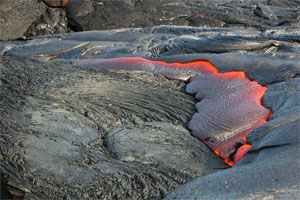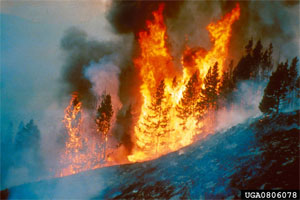|
Primary succession is a change in vegetation which occurs on previously unvegetated terrain (Barnes et al. 1998).
Examples of where primary succession may take place include the formation of new islands, on new volcanic rock, and on land formed from glacial retreats.
In primary succession, the initial conditions are often times very harsh, with little or no soil present.
The site conditions change slowly in response to the vegetation as soils develop.
The problem with stopping here with this definition is that it suggests that primary succession only occurs on “previously unvegetated terrain”.
However, if soils develop continuously through time and there is a relationship between soil development and vegetation, then primary succession really never ends.

Hawaiian Volcano Observatory, USGS, www.usgs.gov
Secondary succession occurs after a disturbance disrupts ecosystem processes and removes part of the existing biota (Barnes et al. 1998).
Disturbances such as forest thinning, floods, fire and wind can all lead to secondary succession.
Examples of secondary succession are the gradual replacement of old fields by forest or the vegetation recovery and change following wildfire occurrence.
In contrast to primary succession, there are typically legacies of the vegetation that was on the site prior to the disturbance, soil is already developed, and vegetation change happens much more quickly.

Dave Powell, USDA Forest Service, www.forestryimages.org
|
